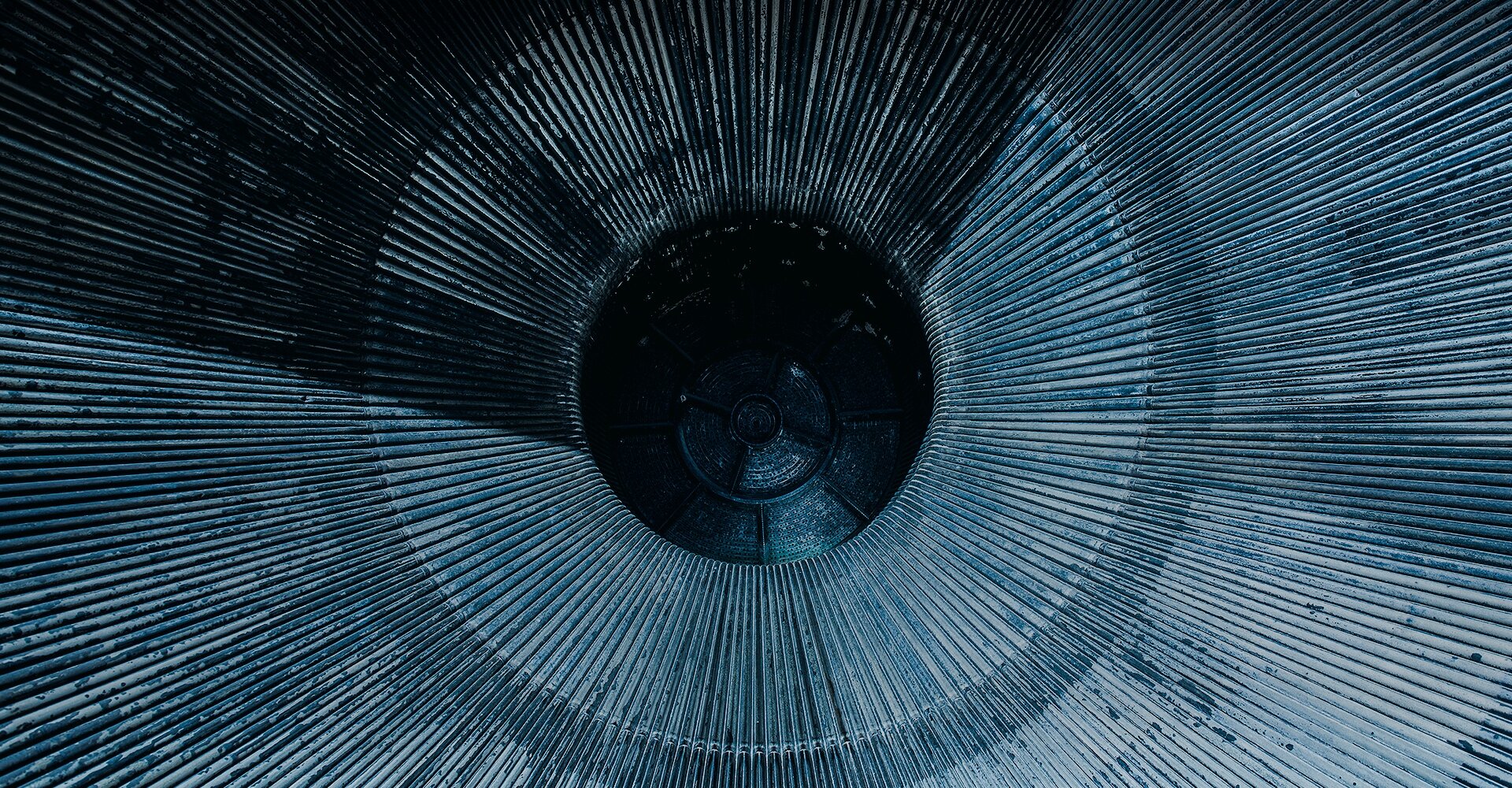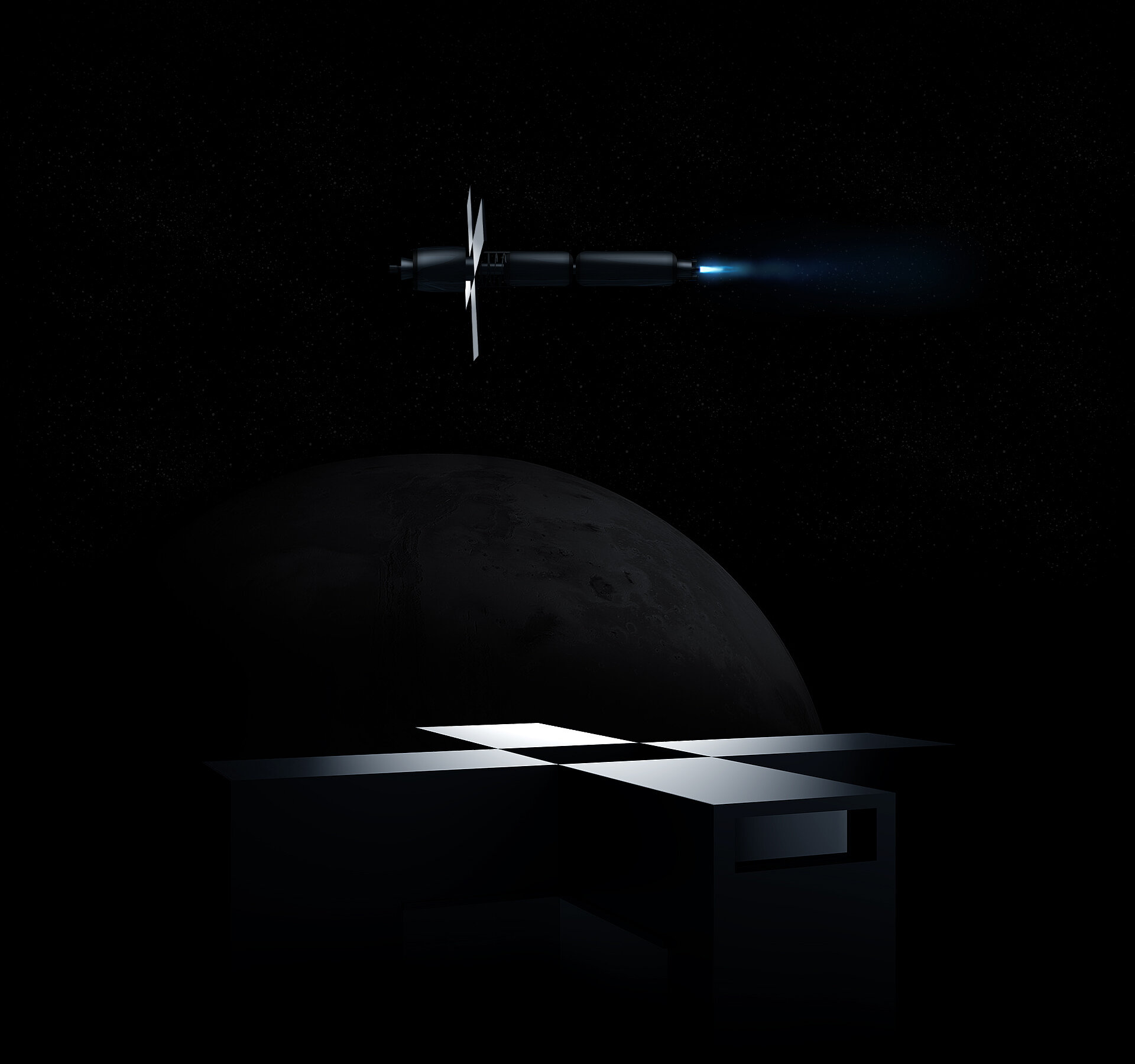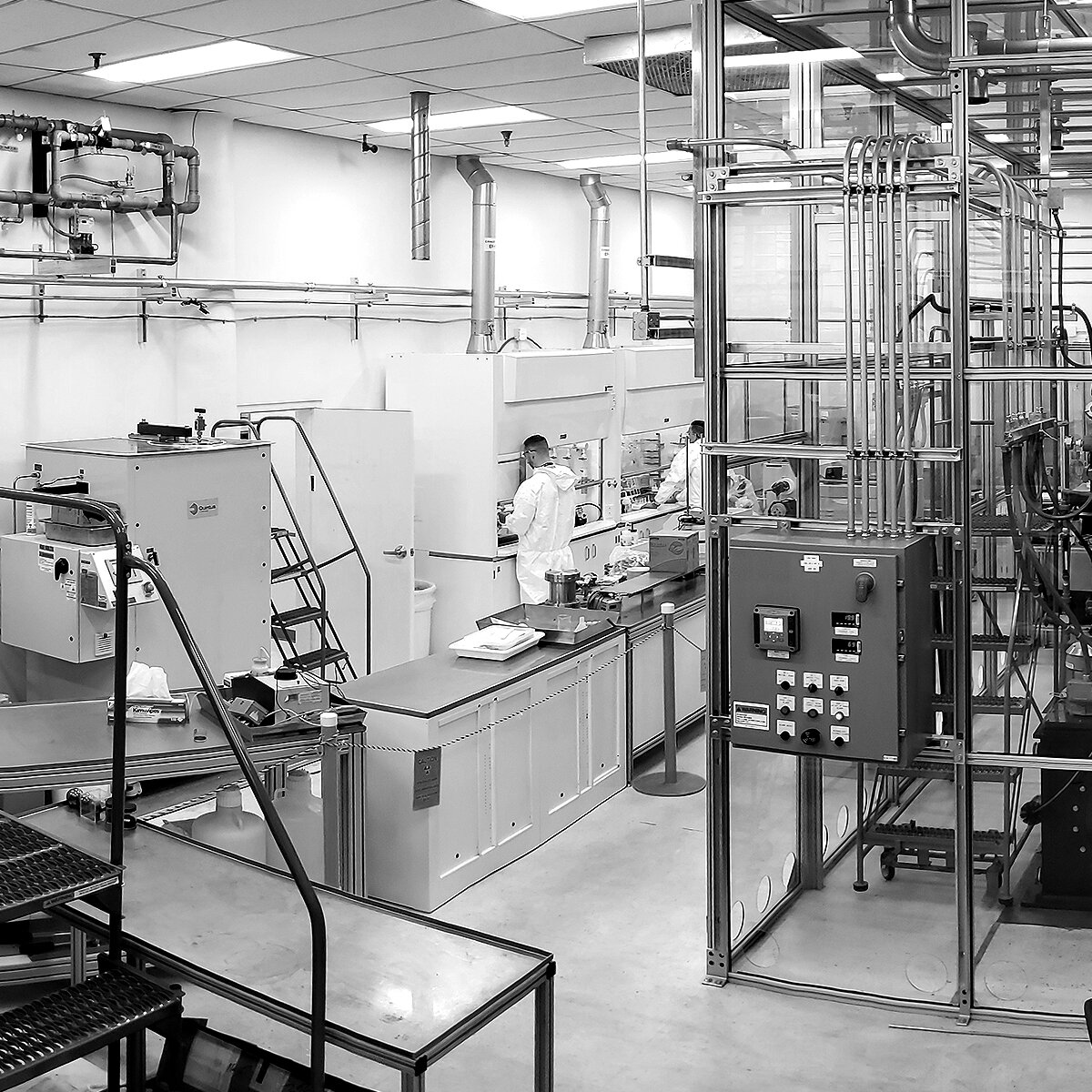Going somewhere?
Chemical rockets top the list of the fastest objects ever made. But if we want to open up the solar system for human exploration, they’re not nearly fast enough.
Enter nuclear thermal propulsion
Nuclear Thermal Propulsion
Today, a one-way trip to Mars takes a minimum of six months. That’s a long time for an astronaut to spend in a spacecraft about the size of a one-bedroom apartment. It also creates significant operational challenges for the mission. The longer an astronaut is in transit, the more they’re exposed to high doses of dangerous cosmic radiation and the more supplies they need to carry with them for the mission.
Over the past half-century, engineers have squeezed every last drop of efficiency from conventional chemical rocket engines. If we actually want to make regular trips to Mars, we’re going to need a step change in rocket engine efficiency.
Chemical rockets top the list of fastest objects ever made, but they are still not fast enough
If we want to open up the solar system for human exploration, they’re not nearly fast enough.

How to get to Mars?
Human travel to Mars requires significantly faster transportation. Nuclear Thermal Propulsion enables space craft to travel faster, reducing the amount of time humans are exposed to radiation.
Faster Spacecraft
How it works
A nuclear reactor quickly heats a propellant such as liquid hydrogen which expands through a rocket nozzle and provides significant thrust.
Liquid Hydrogen
Early Origins
The idea for nuclear thermal propulsion is almost as old as the space age itself... an idea once ahead of its time.
NASA
NTP: A New Type of Engine
In a conventional liquid fueled rocket engine, an oxidizer and a fuel are mixed in a combustion chamber and ignited. This causes the gases to rapidly expand, which dramatically increases the pressure in the combustion chamber and forces the exhaust through the rocket engine’s nozzle at high speeds.
Nuclear thermal propulsion also works by propelling hot gasses from its engine at high pressure. The key difference is how those gases are brought up to temperature. Instead of combustion, a NTP Reactor System pumps a liquid propellant—typically hydrogen—through the core of a high-temperature nuclear reactor. As the gas flows through the reactor’s core, it is brought to blistering high temperatures (>2,500C), which causes it to rapidly expand through a nozzle and produce thrust.
One of the main benefits of nuclear thermal propulsion is its efficiency. A nuclear thermal rocket can achieve more than twice the efficiency compared to a conventional chemical rocket because it’s propellant is brought to a far higher temperature than can be achieved in a conventional combustion chamber. That means a nuclear thermal rocket can cut the transit time to Mars (and back home) in half.
“You’re not burning anything, so you don’t have to carry oxygen, which is really heavy,” says Mike Kynard, the former project manager for NASA’s Space Nuclear Propulsion Project. “But you still have to carry a lot of hydrogen all the way out to Mars so you can get back and that requires an extremely efficient system. NTP is tailor made for that.”
“You’re not burning anything, so you don’t have to carry oxygen, which is really heavy”
— Mike Kynard (former project manager for NASA’s Space Nuclear Propulsion Project)
NASA’S Nuclear Dream
The idea for nuclear thermal propulsion is almost as old as the space age itself. In the early 1960s, NASA joined forces with the Atomic Energy Commission to explore the design of a NTP engine. The pioneering NERVA program culminated in a series of ground tests with a prototype nuclear engine and inspired Werner von Braun, the director of NASA’s Marshall Space Flight Center and the father of modern rocketry, to propose launching astronauts to Mars on a nuclear thermal rocket by the 1980s. The dust had barely settled from Neil and Buzz’s “giant leap”, but von Braun already recognized the immense potential in nuclear thermal propulsion.
Despite NASA’s early enthusiasm around nuclear thermal propulsion, its NERVA engine never made it to space. The program was plagued by technical challenges, especially when it came to finding materials that could withstand the intense reactor temperatures that are key to a nuclear rocket’s efficiency. Materials science just wasn’t ready to handle the heat—until now.
Seeing Red
Now that NASA once again has its sights locked on Mars, nuclear thermal propulsion is poised for a renaissance. For years, engineers at NASA have been studying the fundamental physics and material science of critical components in a nuclear thermal engine. The program has received strong support from Congress, which has earmarked more than $100 million for NASA’s nuclear thermal propulsion program in its budget for each of the last four years.
NASA’s goal is to launch the first flight demonstration mission of a nuclear thermal engine by the mid-2020s. But they can’t do it alone, which is why the agency tapped X-energy to help develop reactor and fuel concepts for a spacefaring nuclear thermal engine.
NTP @ XE
In the summer of 2020, X-energy submitted its concepts for a nuclear thermal propulsion reactor capable of achieving a specific impulse of 900 seconds. Specific impulse is a measure of how efficiently a rocket engine uses its propellant. It’s kind of like gas mileage for a car: a higher specific impulse means you can go faster and farther for a given amount of propellant. X-energy’s design for a nuclear thermal propulsion system would be capable of more than twice the specific impulse of the Saturn V engines that carried astronauts to the moon, which remain the most powerful and efficient rocket engines ever flown in space.
A big question for NASA is what type of nuclear fuel design to employ in these planetary exploration reactors. Concerns about proliferation risks have dampened enthusiasm for using high enriched uranium, but the low-enriched uranium used by existing terrestrial nuclear reactors lacks the energy density to meet the needs of a high-temperature propulsion reactor system. High-assay low enriched uranium (HALEU) fuel, which occupies a middle ground between low- and high-enriched uranium (up to 20% enriched), is a strong contender for nuclear thermal rockets.
“I think the biggest breakthrough lately is the fact that we have found ways to use [high assay] low enriched uranium to get the kinds of performance that we need for nuclear thermal propulsion,” says Kynard.
X-energy is one of the only companies in the US capable of producing ceramic-coated fuel forms using HALEU, which is at the core of our TRISO fuel. Each TRISO fuel kernel consists of a 0.5 micron pellet of uranium oxycarbide—the size of a poppy seed—wrapped in three alternating layers of graphite and silicon carbide. Thousands of these particles are embedded in a graphite fuel form: either pebbles or prismatic compacts. In X-energy’s terrestrial reactor, the Xe-100, more than 60,000 of these pebbles (roughly the size of a cue ball) will be cycled through the reactor core over the course of a year.
“We asked ‘Why things are still done that way?’ and in a lot of situations, the answer was, ‘That’s how we’ve always done it.’
So we attacked the problem to understand what is really going on at a fundamental level so we can implement new materials science and manufacturing technology.”
— Dr. Daniel Brown (fuels process engineer at X-energy)
“TRISO fuel was first created in the 1960s and a lot of the processes used to fabricate that fuel still use 1960s technology,” says Dr. Daniel Brown, a fuels process engineer at X-energy. “We asked ‘Why things are still done that way?’ and in a lot of situations, the answer was, ‘That’s how we’ve always done it.’ So we attacked the problem to understand what is really going on at a fundamental level so we can implement new materials science and manufacturing technology.”
By going back to the fundamentals, we were able to identify key areas where TRISO fabrication could be improved. After years of research and development, X-energy created proprietary processes for manufacturing ceramic-coated particle fuel that have dramatically improved the quality, consistency, and safety of TRISO fuel while also ensuring reliable supply at commercial scale.
We call our creation TRISO-X.
Temperature is Critical
The most important thing about X-energy’s TRISO-X fuel is that it can be safely used at extremely high temperatures. The layers of graphite and silicon carbide around the uranium grains act like a self-contained shield that retains the uranium fission products. That means the uranium can be brought up to temperatures well above 3000 degrees Fahrenheit—more than 7 times the operating temperature of a conventional nuclear reactor—without the risk of a meltdown. This is a critical feature for a nuclear thermal rocket, which must operate at much higher temperatures to achieve its efficiency gains over chemical combustion engines.
“Being ‘meltdown-proof’ fuel isn’t enough… a nuclear thermal rocket needs an equally robust core.”
— Dr. Hans Gougar (X-energy’s Manager of Product Engineering for Micro-Reactor Development)
But being “meltdown-proof” fuel isn’t enough, says Dr. Hans Gougar, X-energy’s Manager of Product Engineering for Micro-Reactor Development. A nuclear thermal rocket needs an equally robust core. X-energy’s proposed high-temperature gas-cooled reactor design traces its origins to NASA’s NERVA program. Like the NERVA engine, X-energy’s design flows hot hydrogen through a graphite core to generate thrust. A key difference is that our TRISO-X fuel matrix uses advanced materials that don’t break down while the engine is operating at extreme temperatures. Our advanced moderator materials increase the efficiency of the fission reaction, enabling the use of HALEU fuel while keeping the reactor light enough for flight.
The efficiency of our nuclear thermal propulsion core is a key differentiator of our design. For any space application, weight is always a key consideration, which means carrying the minimum amount of fuel possible to safely complete a mission. At X-energy, we’re in the business of making small nuclear reactors, but even our terrestrial units are much too large for a rocket. Our Xe-100 reactor is several hundred tons too heavy to be boosted into space. The future of nuclear thermal propulsion depends on our ability to produce about the same power output as a typical commercial advanced reactor, but operating with a much higher temperature while decreasing its size by orders of magnitude.
After months of conceptual design work for NASA, we’re confident our innovations and experience with small high-temperature gas reactors and meltdown-proof TRISO-X fuel will enable near-future crewed interplanetary missions. We’re already beginning to conduct experiments on advanced NTP fuel fabrication at our pilot TRISO-X production facility at Oak Ridge National Laboratory so we’re ready to scale our fuel production to meet NASA’s exploration timelines. We also benefit from the space exploration experience of our sister companies, Intuitive Machines and Axiom Space, which are developing the world’s first privately developed lunar lander and commercial space station, respectively.
“Close collaboration with our TRISO-X fuel team and our sister companies who have been planning and executing space missions for years has greatly accelerated our multi-disciplinary design process and improved our solutions,” says Dr. Brad Rearden, the Director of Engineering and X-energy’s solution architect for space reactors. “We are leveraging lessons learned from other microreactor initiatives and leaning on our custom advanced computational toolkit to create a truly innovative solution that can be manufactured, tested, and flown by the mid-2020s - achieving NASA’s timeline.”
The nuclear thermal rocket was once an idea ahead of its time.
Now its time has come.
Our History with Space
Our family companies are commercializing the ISS & landing on the moon.

What else are we doing in space?
Lunar Surface Power
Sustained moonbases






